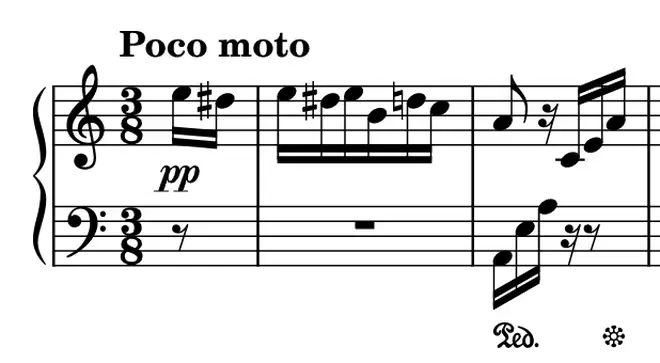What’s so creepy about a semitone?
16 November 2021, 16:57 | Updated: 16 November 2021, 17:13

From the dauntingly deadly Jaws theme, to the creepy choral cacophony of Squid Game, we explore why the interval of a semitone sounds so sinister.
A semitone is the smallest interval used in Western classical music. As the name suggests, it is half of a tone, a ‘half-step’, or a minor second.
Western classical composers throughout the years have utilised this tiny but powerful interval in their programmatic music. Most notably, the interval appears in horror movies, and non more prominently than Steven Spielberg’s 1975 classic, Jaws.
Read more: John Williams proves just how scary two repeated notes can be in this ominous soundtrack

Jaws - Theme song
When Williams first played the main two-note motif to Spielberg on a piano, the director initially laughed thinking it was a joke. Williams then backed up his musical choice by describing the theme, performed on the tuba, as “grinding away at you, just as a shark would do, instinctual, relentless, unstoppable”. Scary!
Jaws isn’t the only famous example of film music utilising the interval for creepy purposes.
Netflix’s recent hit survival drama, Squid Game, features music by an artist, credited only as ‘23’, who composed one of the most recognisable tunes of the show, Pink Soldiers.

Pink Soldiers
The eerie vocal tune underscores the Pink Soldiers, who are present as a kind of law enforcement during the games.
This particular score accompanies some of the creepiest moments of Squid Game, with the music often playing when the faceless guards appear on screen.
Whenever the haunting tune plays, you know something unsettling is about to happen, and the audio puts viewers on the edge of their seats.
Watch here: A cappella choir flawlessly singing the ‘Squid Game’ soundtrack will haunt your dreams

The vocal part alternates between singing a minor third (A♭ to F) and a minor second (A♭ to G). Both are minor intervals, so already give an uneasy feeling to the listener, but the repetition of both intervals for the entirety of the 30-second piece makes for an elongated and disconcerting listening experience.
Other famous sinister semitone soundtrack examples can be found in the murder shower scene from the 1960 Alfred Hitchcock movie, Psycho.
The terrifying scene is accompanied by a clashing semitone, as the notes D♯ and E are played at the same time. The result is an intense and unsettling underscoring of a bloody murder scene.
Read more: The 13 scariest horror film soundtracks ever written
But what about Für Elise?
Pieces that prominently feature semitones however, aren’t always creepy works in themselves. A notable example is the opening motif of Für Elise.

Lang Lang 'Für Elise' (live at The Global Awards 2019)
The first five notes of the piece are a repetition of a minor second interval, and this is a motif which remains prominent throughout the rest of the solo piano work.
However, while you may not associate the 1810 Beethoven bagatelle with all things chilling and creepy, this is most likely because of what comes after the semitones.
Listen to the beginning of Für Elise. The opening motif resolves on the note of A, after teasing the fifth (E) and sharpened fourth (D♯). When the piano lands on the A, and the left hand joins in, cementing us in the key of A minor, there is almost a feeling of relief.
Read more: Cast ‘went silent’ as Will Smith played Beethoven on piano in improvised scene

Now imagine the opening of Für Elise again, but this time, there is no resolution. In fact the whole piece is just the first four notes, E, D♯, E, D♯, repeated on and on and on and....
There would be no denying the creepiness (and boringness) of that musical choice. But by beginning Für Elise with this unsettling minor second, Beethoven gives us a warming feeling by resolving the anxiety-inducing interval mere seconds after introducing it.


























